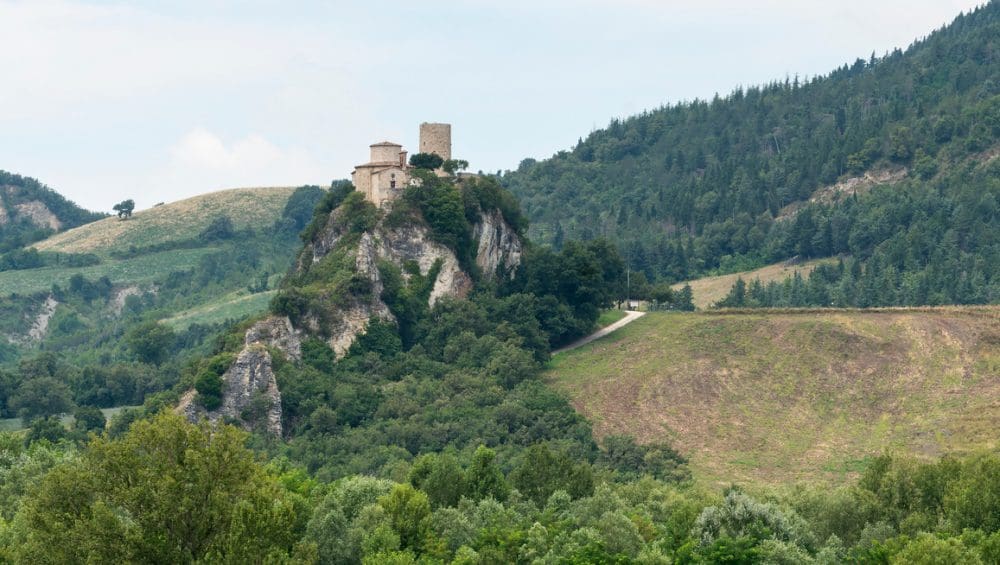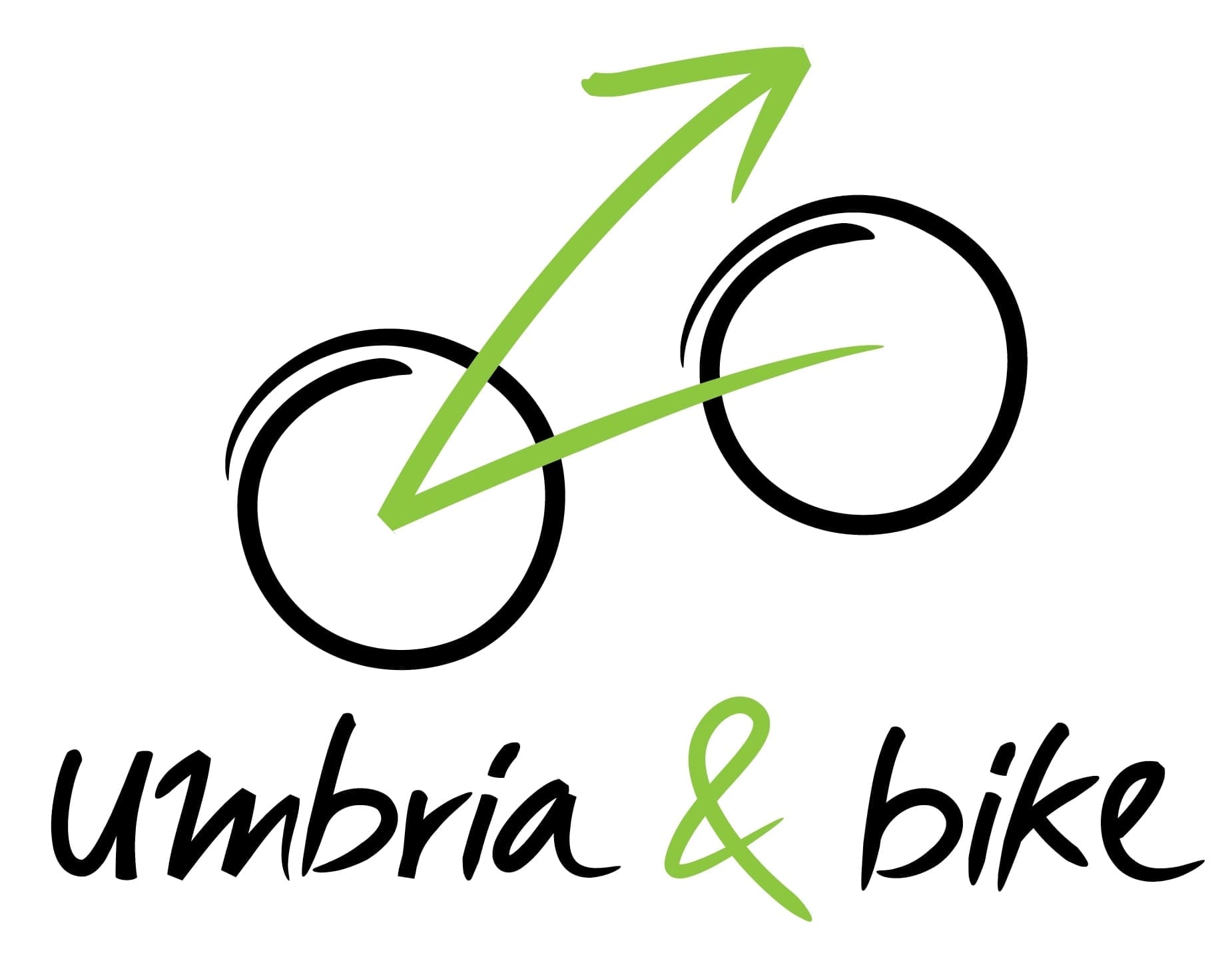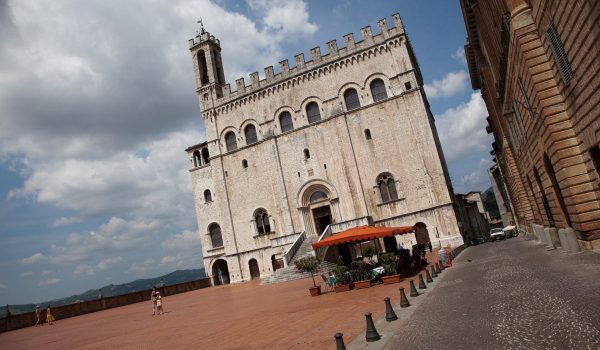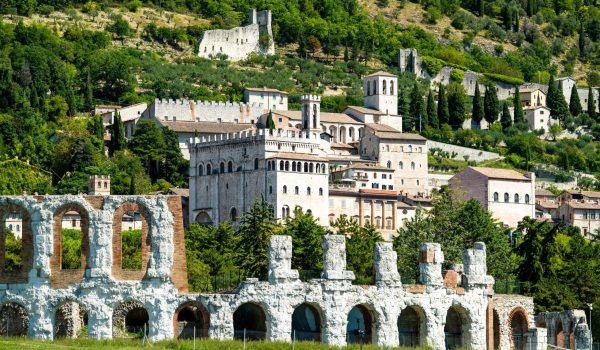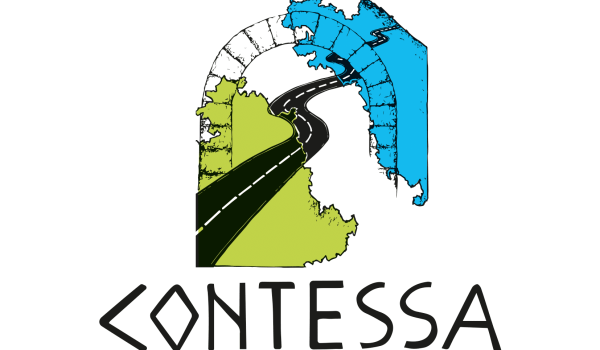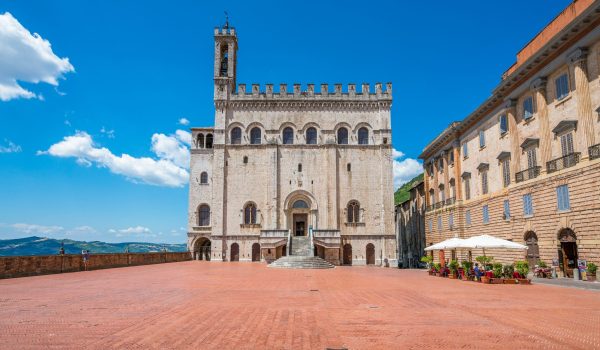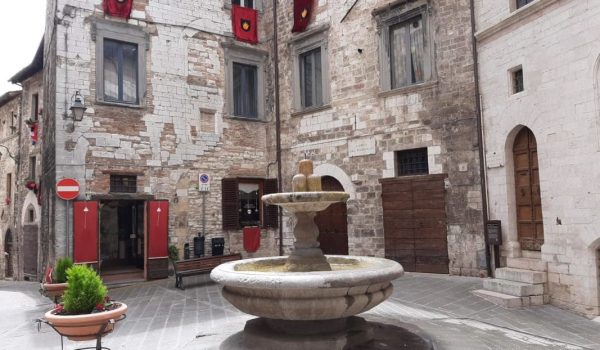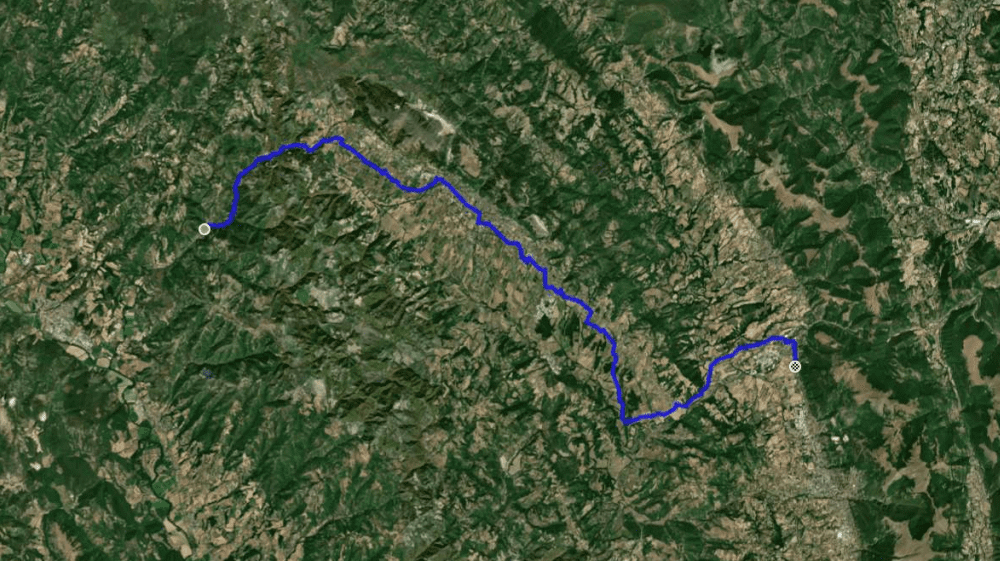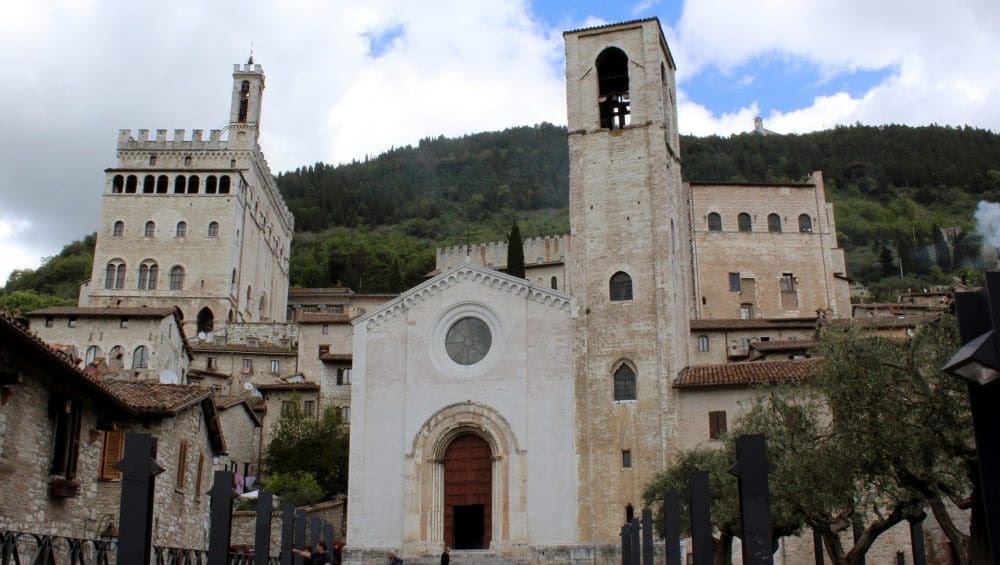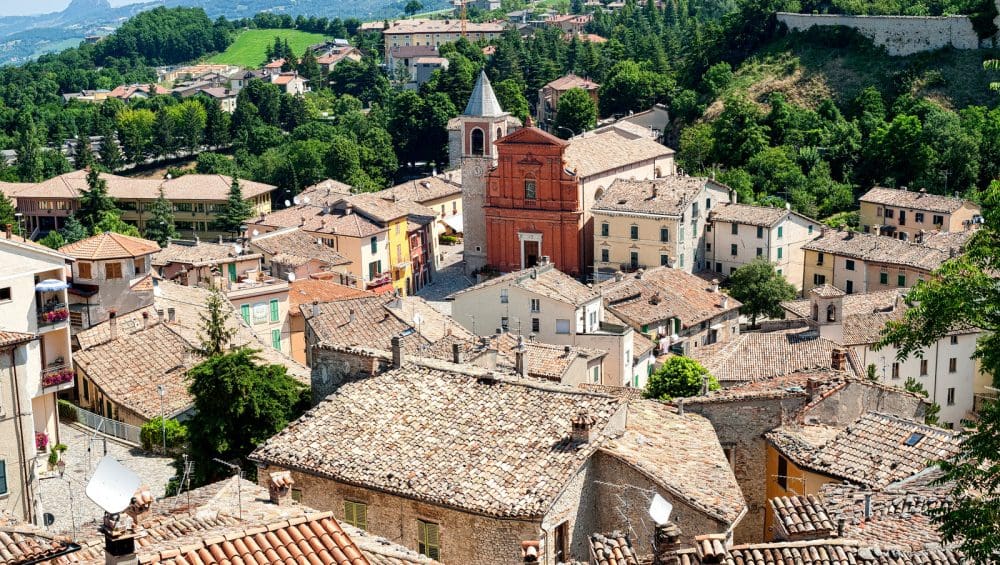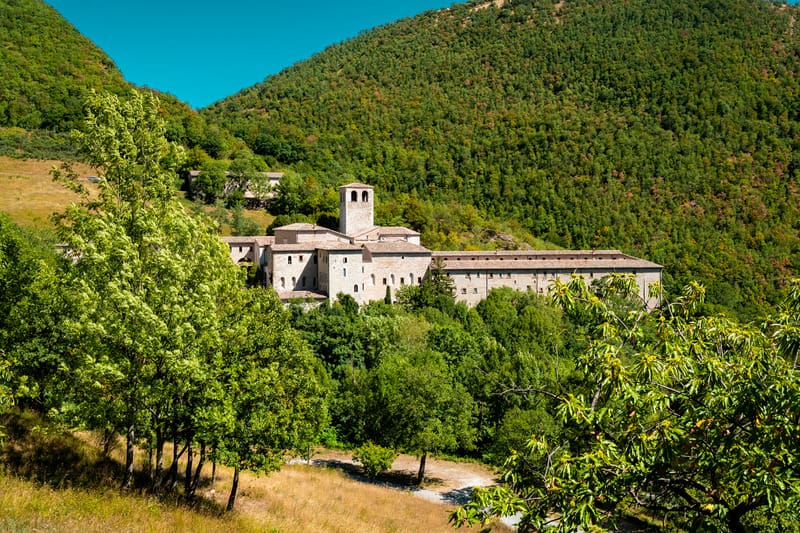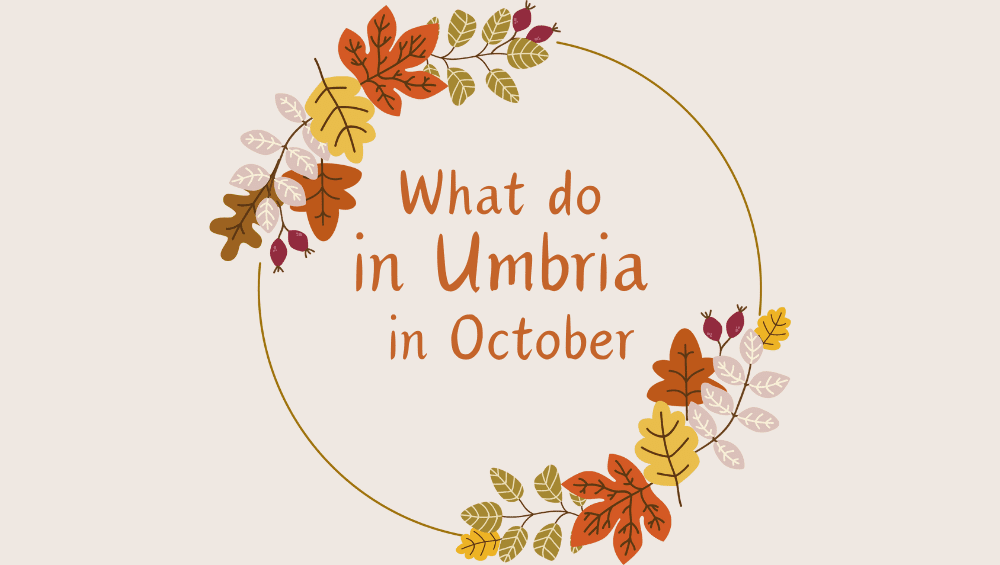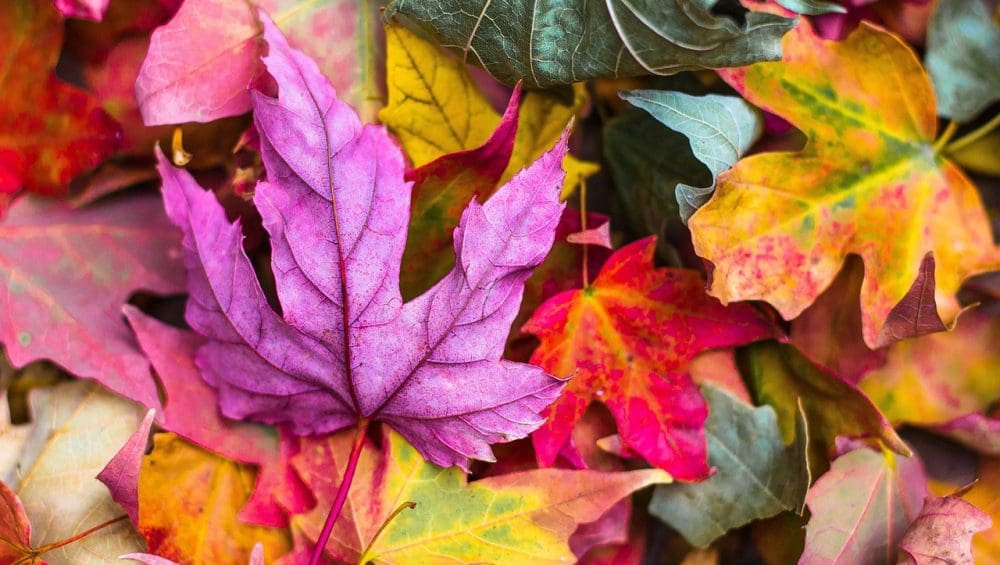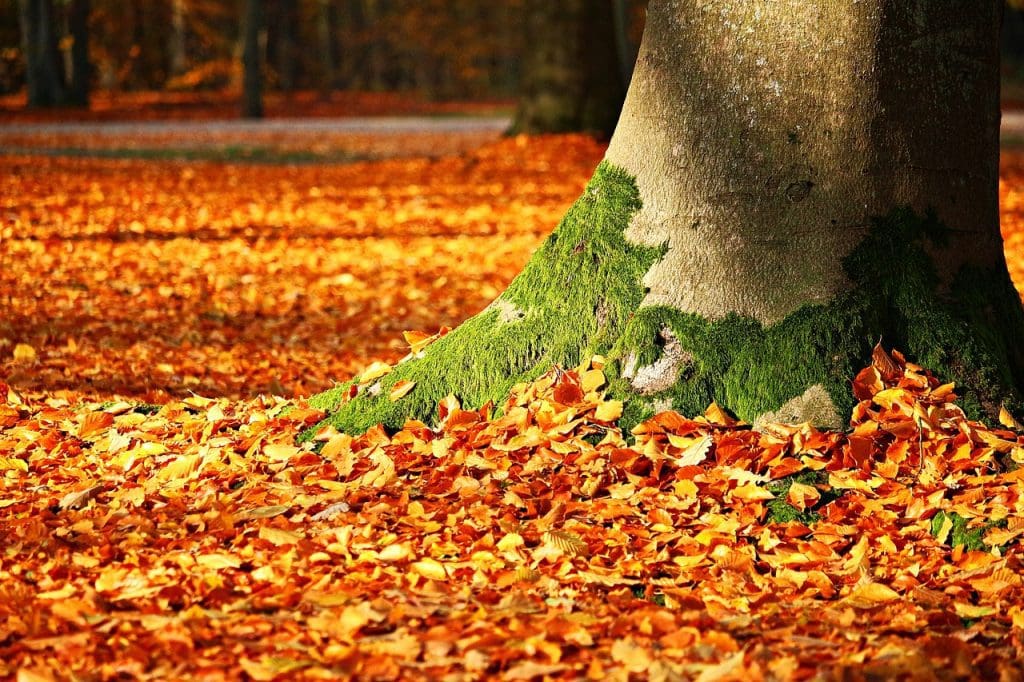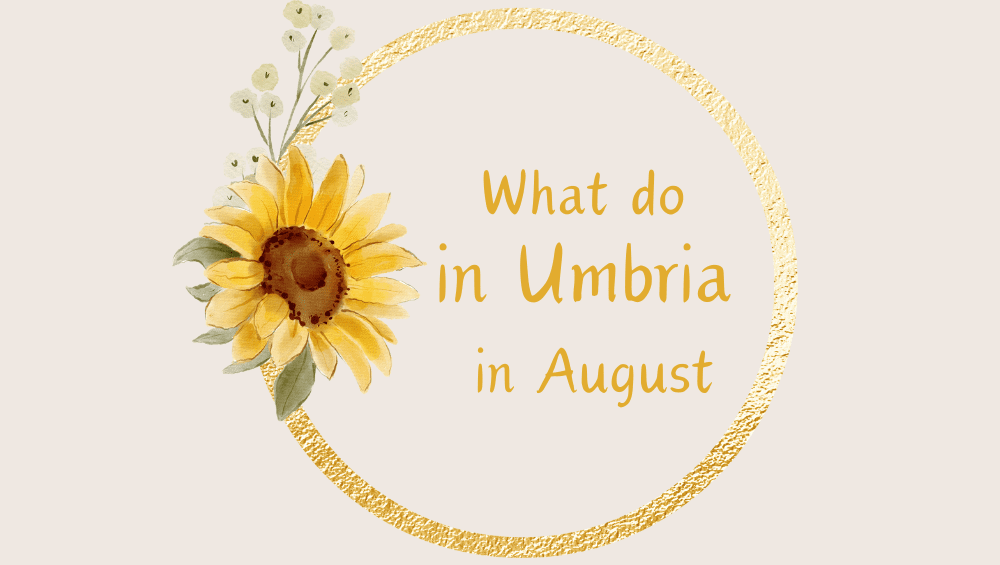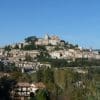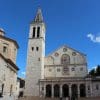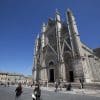The beating heart of the city and the protagonist of any visit is the scenic and panoramic Piazza Grande, an extraordinary example of a “suspended square”, supported by the arches that can be admired in the lower part of Gubbio, from which you can enjoy a splendid view of the valley.
The square is home to Palazzo dei Consoli, the symbol of the city, built in Gothic style to testify to the importance of Gubbio in the medieval era. Inside Palazzo dei Consoli is the Gubbio civic museum, with the “campanone” and the seven “Eugubine Tables”, the most important document for the history of the Italic peoples, dating back to between the 3rd and 2nd centuries BC. Palazzo dei Consoli also has a curious historical record: it is the first Italian building to have had running water, pipes and toilets.
In the lower part of the town is Piazza Quaranta Martiri, a market area in the Middle Ages. On the south side is the church of San Francesco, to which the episode of San Francesco and the wolf is linked. According to the story, when he arrived in Gubbio, San Francesco found the city deserted because the inhabitants were afraid of a ferocious wolf. San Francesco went into the forest and made a pact with the animal that the wolf would no longer attack the men, who would instead feed and care for him. The stone on which the pact was signed and the stone of the tomb where the wolf was later buried are still visible in this church. In the highest part of the city, at 908 meters above sea level, on Mount Ingino, you can admire the Basilica of Sant’Ubaldo which houses the remains of the saint and the famous candles. It is worth climbing on foot or by cable car. The little cable car adventure is recommended: you go up for about 500 meters suspended in the void in a small “cage” that can fit a maximum of 2 people, with a breathtaking panoramic view of the roofs of Gubbio and the surrounding countryside.
The municipality of Scheggia and Pascelupo is a mountainous territory of about 64 km², which occupies the north-eastern portion of Umbria, on the border with the Marche, and is the only Umbrian municipality located entirely on the Adriatic side of the Apennine chain. Immersed in the heart of the Umbrian-Marche Apennines, it occupies a vast area of the Monte Cucco park. Woods, rocky walls, ravines, and springs of clear water are frequent.
The area, in addition to a notable variety of plants such as beech, holm oak, and downy oak, is also home to animal species at risk of extinction, such as the Apennine wolf, the golden eagle, and the otter. Nearby are Mount Catria (1701 m), Mount Cucco (1566 m), Mount Motette (1331 m), Mount Le Gronde (1373 m), the Rio Freddo gorge and the Valle delle Prigioni.
The Sentino river, with its course along the valley of the same name, crosses the territory of the municipality, but there are numerous other watercourses, among which the Rio Freddo (coming from the Monte Cucco massif), the Artino River and the Fosso della Gorga (which
come from the Monte Catria group), the Fosso della Pezza (from Monte Tino), the Fosso di Campitello or Bulgarello, and the Sanbucara ditch (coming from Monte Motette) and the Fosso la Foce (from Monte Orneti) stand out for their importance in terms of flow.
There are also numerous springs and sources of fresh water throughout the surrounding mountainous territory, including the Fontanelle source (783 m), S. Giglio spring, Campora spring and Peschi spring along the slopes of Mount Motette, Lorno spring (877 m), Bregna spring (830 m) along Mount Foria and Tino spring on the esplanades of Mount Forcello.
The Scheggia mountain is Mount Calvary (949 m above sea level) on which the sanctuary of Mount Calvary is located. Its name derives from the Latin calles oviariae or “sheep paths”, in fact the mountain is
the access route to the pastures of Mount Cucco. Its origins date back to the end of the first millennium AD and are closely linked to the history of the Camaldolese congregation. The hermitage was probably founded by Saint Romuald in 980. The abbey was greatly boosted by the work of Saint Pier Damiani, who became a monk here in 1035 and Prior from 1043, not only for the expansion of the original buildings but also for a strong cultural and spiritual development that made the hermitage a religious and social reference point.
Tradition reports the number of 76 saints and blesseds who lived in the hermitage. The Hermitage is mentioned in the Divine Comedy (Paradise, canto XXI) by Dante Alighieri, who seems to have also been a guest there. The square in front of the basilica; on the left the entrance to the cloister and on the right the scriptorium. Built as an abbey in 1325, Fonte Avellana became a socio-economic power and, shortly thereafter (year 1392), it became acquainted with the practice of commenda (14th – 15th century). In 1569, Pope Pius V Ghilslieri suppressed the autonomous Avellanite congregation that had governed the monastery until then, passing it to the Camaldolese congregation. Not even forty years later, in 1610, it passed to the Camaldolese cenobitic congregation of San Michele di Murano, only to return to the Camaldolese congregation at the beginning of the twentieth century. Fonte Avellana remained “commended” until almost the end of the 18th century, and even if it had commendants such as Cardinal Giuliano della Rovere (later Julius II), who left signs of a building nature and embellishments worthy of note, it nevertheless deeply felt the inevitable conditioning, which is why the decline of its monastic life was inexorable, even if slow.
This decline ended with the Napoleonic suppression of 1810 and shortly thereafter the Italian one of 1866. Having returned under the management of the Camaldolese monks in 1935, today Fonte Avellana has rediscovered its ancient splendor, both spiritual and architectural.
The choir of the Basilica of the Monastery of Fonte Avellana On 5 September 1982 Pope John Paul II visited Fonte Avellana on the occasion of the celebrations for the millennium of the foundation of the Hermitage. In March of the same year the Pope elevated the abbey church to the dignity of a minor basilica. Since 2007, the monastery’s Botanical Garden, which has always been reserved for monks, has also been open to the public.
The territory of the Municipality of Frontone has been inhabited since ancient times; the first population to create a stable settlement was certainly the Umbrians and later the Celts arrived first and then the Romans, then the area was conquered by the Lombards who were then replaced by the Franks. The first written documents that speak of the castle and the civil community of Frontone date back to the eleventh century, and its history, until the end of the fourteenth century, was inextricably linked to that of Cagli, to which it belonged as a fief. It then became a possession of Gubbio under the rule of the Gabrielli family until 1420 and then passed to the Duchy of Urbino, except for a very brief Malatesta domination. In 1530 the castle and the territory of Frontone became a county of the Duchy of Urbino, a gift from Francesco Maria I Della Rovere to the Modena nobleman Gianmaria Della Porta and remained so until the abolition of feudal jurisdictions following the annexation to the Napoleonic Kingdom of Italy (1808), an abolition later renewed by Pope Pius VII (1816).


